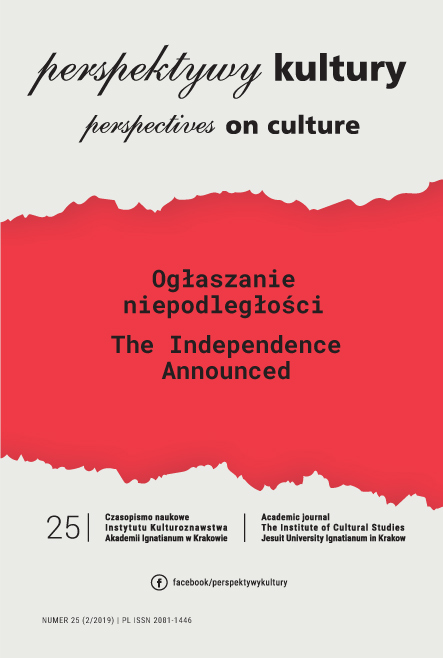“The World of Tomorrow” or “The World of Yesterday”? The Image of an Independent Nation at the 1939 New York World’s Fair
Abstract
Poland’s presence at World’s Fairs between the World Wars is a special issue in that, after a long absence on the map of Europe, the country had the opportunity to show its industrial and cultural achievements in the international arena as an independent exhibitor for the first time. Thus, this event always had a very important political dimension. Its symbol was the Polish pavilion presented in Paris in 1925, but no less important was the pavilion at the New York World’s Fair in 1939. Although it was a success at the world expo, it was overshadowed by the tragic consequences of the outbreak of World War II almost from the beginning. From today’s perspective, it is worth looking at this object, to evaluate its foundation and ultimate significance, as well as to reflect on the difficult concept of national art, in addition to tracing the fate of the pavilion.
References
Architektura i urbanistyka w Nowym Jorku, “Architektura i Budownictwo,” 1939, Iss. 1.
Drexlerowa A.M., Olszewski A.K., Polska i Polacy na powszechnych wystawach światowych 1851-2000, Warszawa 2005.
Eksponaty z Pawilonu Polskiego Wystawy Światowej w Nowym Jorku z 1939 roku wzbogaciły kolekcję Muzeum Historii Polski, http://muzhp.pl/pl/c/1945/ eksponaty-z-pawilonu-polskiego-wystawy-wiatowej-w-nowym-jorku-z-1939-roku-wzbogaciy-kolekcj-muzeum-historii-polski (access: 30.01.2019).
Konkurs powszechny nr 95 na projekt szkicowy Pawilonu Polskiego na Światowej Wystawie w Nowym Yorku w 1939 r., “Architektura i Budownictwo,” 1938, Iss. 3.
Niemojewski L., Polska na wystawie w Nowym Yorku, “Architektura i Budownictwo,” 1938, Iss. 3.
Nowakowska K., Pawilon Polski na nowojorskiej wystawie światowej (1939- 1940), Warszawa 2013.
Porycka D., Obiekty z polskiego pawilonu Wystawy Światowej 1939 trafiły do Muzeum Historii Polski, https://dzieje.pl/aktualnosci/obiekty-z-polskiego-pawilonu-wystawy-swiatowej-w-nowym-jorku-1939-trafily-do-kolekcji (access: 30.01.2019).
Winiewicz J., Co pamiętam z długiej drogi życia, Poznań 1985.
Wystawa nowojorska 1939, [Conference papers] Materiały z sesji naukowej Instytutu Sztuki PAN Warszawa, 23-24 listopada 2009 roku, ed. J.M. Sosnowska, Warszawa 2009.
Zamecznik S., W antrakcie, “Architektura i Budownictwo,” 1938, Iss. 3.
Copyright (c) 2019 Jesuit University Ignatianum in Krakow

This work is licensed under a Creative Commons Attribution-NoDerivatives 4.0 International License.
Autor, zgłaszając swój artykuł, wyraża zgodę na korzystanie przez Wydawnictwo Uniwersystet Ignatianum z utworu na następujących polach eksploatacji:
- utrwalania utworu w formie papierowej, a także na nośniku cyfrowym lub magnetycznym;
- zwielokrotnienia utworu dowolną techniką, bez ograniczenia ilości wydań i liczby egzemplarzy;
- rozpowszechniania utworu i jego zwielokrotnionych egzemplarzy na jakimkolwiek nośniku, w tym wprowadzenia do obrotu, sprzedaży, użyczenia, najmu;
- wprowadzenia utworu do pamięci komputera;
- rozpowszechniania utworu w sieciach informatycznych, w tym w sieci Internet;
- publicznego wykonania, wystawienia, wyświetlenia, odtworzenia oraz nadawania i reemitowania, a także publicznego udostępniania utworu w taki sposób, aby każdy mógł mieć do niego dostęp w miejscu i czasie przez siebie wybranym.
Wydawca zobowiązuje się szanować osobiste prawa autorskie do utworu.





